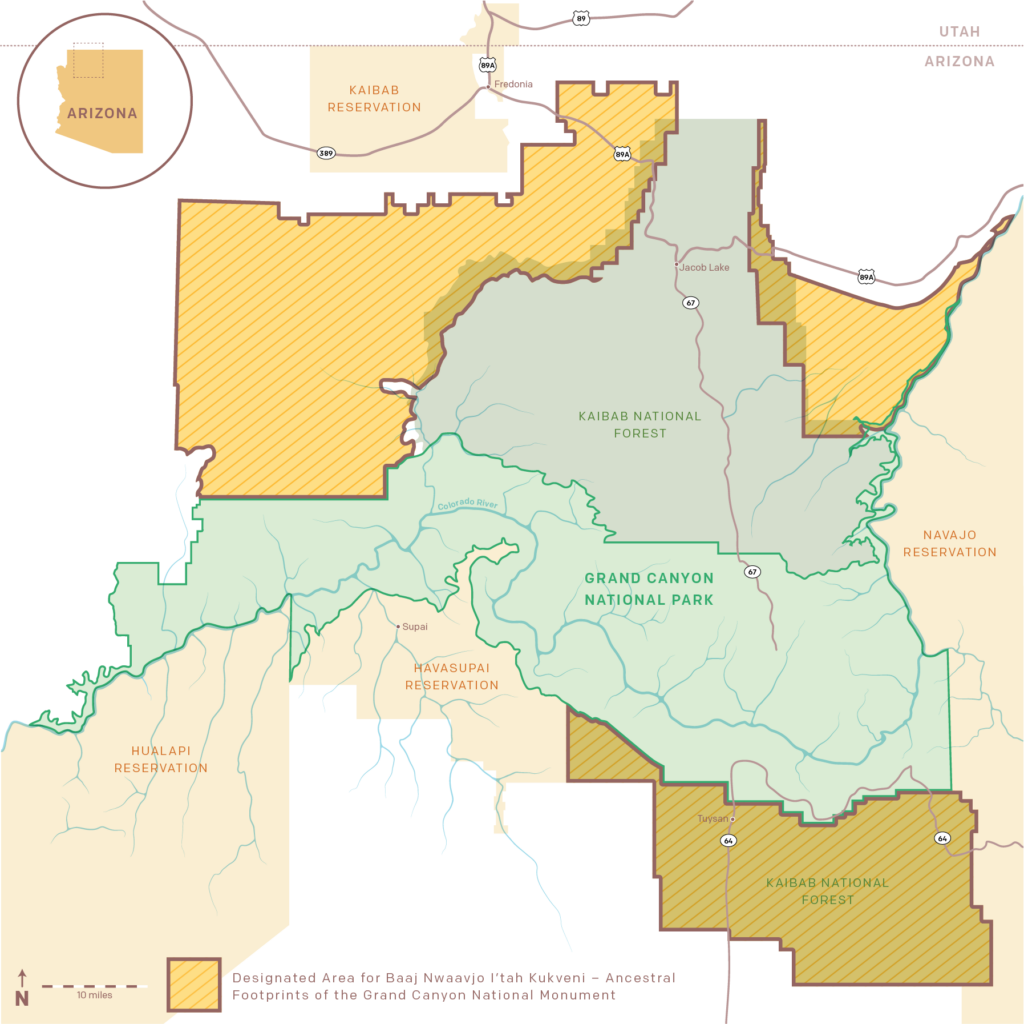Earthjustice goes to court for our planet.
We’re here because the earth needs a good lawyer.
New National Monument Protects Grand Canyon Region from Uranium Mining
This page was published 2 years ago. Find the latest on Earthjustice’s work.
What happened: Nearly a million acres of land next to the Grand Canyon are now off limits from uranium mining and other industrial threats. Heeding calls from tribal leaders, President Biden designated the area as Baaj Nwaavjo I’tah Kukveni – Ancestral Footprints of the Grand Canyon National Monument on August 8.
Why it matters: Previously, this land was protected by a 20-year ban on new uranium mining claims that would have expired in 2032. Earthjustice defended that ban against legal attacks by the mining industry. We celebrate the adoption of permanent protections that will preserve multiple tribes’ ancestral homelands and prevent further damage to the imperiled Colorado River watershed.

(Kate Francis / Brown Bird Design)
What makes the lands surrounding the Grand Canyon worthy of protection?
- Significance to tribes: The monument protects thousands of cultural and sacred sites tied to Native Tribes in the Southwest. Tribes who pushed for the monument designation include the Havasupai Tribe, Hopi Tribe, Hualapai Tribe, Kaibab Paiute Tribe, Las Vegas Band of Paiute Tribe, Moapa Band of Paiutes, Paiute Indian Tribe of Utah, Navajo Nation, San Juan Southern Paiute Tribe, Yavapai-Apache Nation, Pueblo of Zuni, and the Colorado River Indian Tribes.
- Impact on the Colorado River: The river that snakes through the bottom of the Grand Canyon provides water for 40 million people. These people are already experiencing a water crisis as the river dries up due to climate change. We cannot afford to contaminate this scarce resource with mining pollution.
- A crucial refuge for biodiversity: Scientists are warning that nearly 40% of all species will be in danger of extinction by 2100. One of the best ways we can fight back is by protecting places that are home to many species — and the Grand Canyon region is one of these places, harboring an array of plants and animals that includes the critically endangered California condor.
- A majestic place for outdoor recreation: About 5.9 million people a year visit the Grand Canyon region. Their visits support local businesses and play an important role in Arizona’s economy.
What threats were these lands facing?
- Large-scale uranium mining: The region around the Grand Canyon contains uranium ore, and prior to the designation of the national monument, there were nearly 600 active mining claims staked near Grand Canyon National Park.
- A long, deadly history: Uranium mining leaves behind toxic radioactive waste. Previous mining in the Grand Canyon region has contaminated land and water and sickened people living nearby, including on the nearby Navajo Nation, where hundreds of abandoned uranium mines still await cleanup.
- Temporary protections challenged: In 2012, the Obama administration issued a 20-year ban on new uranium mining claims across a million acres of the region around the Grand Canyon. Uranium mining interests quickly sued, and Earthjustice intervened to help defend the ban. In 2014, a federal judge sided with us — but more permanent safeguards were still needed, until now.
Why are national monuments important?
- The 1906 Antiquities Act gives presidents the power to designate monuments on federal lands and waters — an authority granted by Congress. Presidents have used the power for more than a century to protect landscapes of extraordinary cultural, scientific, and ecological value.
- When national monuments come under attack by industrial interests and their political allies, Earthjustice defends these priceless places in court.
- Though the new monument designation is a leap forward for preserving the Grand Canyon’s majesty, some existing mines in the region will be permitted to continue operating. We urge the Biden administration to pursue every option possible to remove or mitigate these threats.
